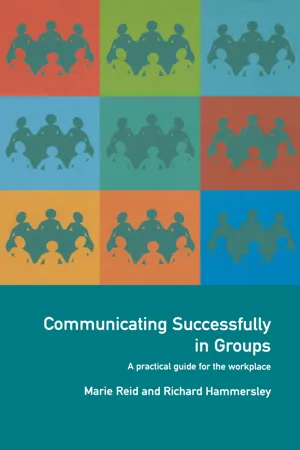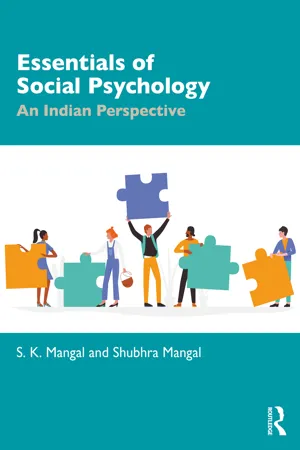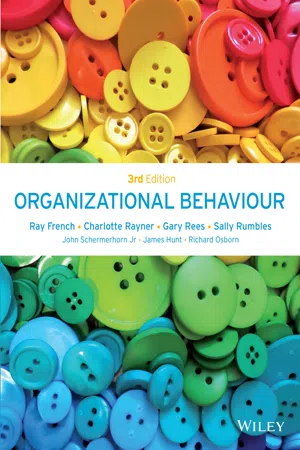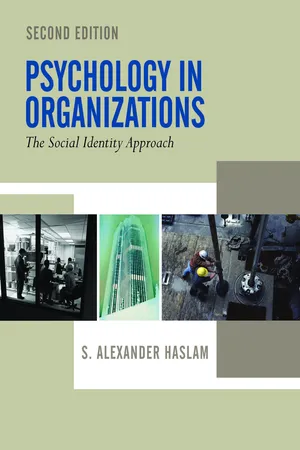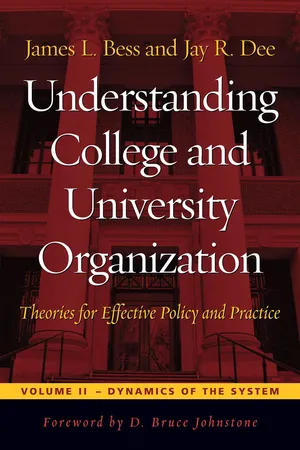Business
Group Decision Making
Group decision making refers to the process of reaching a consensus or making a choice among multiple options by a team or a group of individuals. It involves sharing ideas, discussing alternatives, and ultimately arriving at a decision that reflects the collective input of the group. This approach can lead to more diverse perspectives and potentially better outcomes than individual decision making.
Written by Perlego with AI-assistance
Related key terms
Related key terms
1 of 4
Related key terms
1 of 3
8 Key excerpts on "Group Decision Making"
- eBook - ePub
Communicating Successfully in Groups
A Practical Guide for the Workplace
- Richard Hammersley, Marie Reid(Authors)
- 2014(Publication Date)
- Routledge(Publisher)
9 Group decision-makingWhile it is important to know how and why groups form and operate, at work most groups function to make and implement decisions of various kinds. As we will see in this chapter, group decision-making has certain advantages, but can be flawed. Moreover, in order to make sound decisions it is important that the group functions well, as a group. It is generally not possible to set up a group at work to make decisions, without considering the other aspects of group functioning that we have looked at so far. Groups that do not get on, do not communicate openly, or are run autocratically are more likely to make poor decisions.Objectives
By the end of this chapter you should:- Appreciate the advantages of group decision-making.
- Know the main problems that can occur, including risky shift, polarisation and ‘groupthink’.
- Understand the processes that underlie group decision-making.
- Know some of the traps to avoid in group decision-making.
- Know some techniques for making better decisions in groups.
Decision-making within groups
Many decisions are made in groups rather than by individuals on their own; often it is assumed that a more balanced decision can only be accomplished by a group of people. Some groups are specifically designed for decision-making, including committees, juries, government bodies and quangos, health care teams and company boards. Most groups at work will have to make some decisions and groups have been found to make ‘better’ decisions than individuals in some situations. Some of the perhaps obvious advantages to group decision-making compared with just one person are that a group can have: - eBook - ePub
Making Decisions That Matter
How People Face Important Life Choices
- Kathleen M. Galotti(Author)
- 2005(Publication Date)
- Psychology Press(Publisher)
8 Group and Organizational Decision MakingThe preceding seven chapters have focused on decisions made by individuals. We’ve examined the goal setting, decision structuring, and selections made by people, acting as if the individual people have sole responsibility for the entire task. But in many cases, this simply isn’t true.Many decisions are made by pairs of people, such as a couple deciding on purchasing a house, a car, or making an investment. Parents choose day care and, later, schools or school programs for their young children. Siblings make decisions about health care for aging parents. In some cases, the number of people involved in a decision grows even larger: Work groups develop a marketing plan; juries decide the fate of accused criminals.In this chapter, we’ll look at Group Decision Making, starting with small, dyadic groups, next looking at larger groups, such as teams, committees, or juries. We’ll next consider organizational and cultural effects on the process of decision making. Our focus here will be on how Group Decision Making differs from individual decision making, both in terms of the processes involved (e.g., negotiation) and the outcome. For example, are several heads better than one; that is, do groups typically make better decisions than individuals? We’ll begin by looking at how two people make decisions together.DYADIC DECISION MAKING
Couples obviously make many decisions together. Married couples or couples living together might decide whether or not to change residence, build or buy a house or car or other major consumer good, have or adopt a child, place a child in an educational or day-care setting, to name just a few. Friends or business partners might decide to take a trip together, to launch a new venture, or to merge their operations. In this section, we’ll look at how two people make decisions. - eBook - ePub
Essentials of Social Psychology
An Indian Perspective
- Shubhra Mangal, Shashi Mangal(Authors)
- 2022(Publication Date)
- Routledge(Publisher)
Every group has to indulge in the process of decision making (choose one out of several possible courses of action) for carrying out its one or the other functions. For this purpose, in a democratic setup, they get engaged in the task of arriving at a collective decision by making use of all the available information and taking care of the viewpoints of all the group members. At the end, the work of taking final decision in this concern is carried out by employing one or the other mode such as consensus, compromise and majority vote, leaving the matter to the leader or arbitrator.In such decision making in groups, there always remain possibilities for arriving at such group decisions that may prove highly damaging, painful and disastrous in their after effects. It happens on account of the potential dangers and pitfalls inherent either in the process of decision making or in the minds of the decision makers. In this connection, socio-psychologists and researchers have mentioned certain things responsible for this mess such as: biased use of available information in groups; failure to share unique information available to one or the other members of the group; the effect of the phenomenon of group polarization; and groupthink.The phenomenon of group polarization is found to affect the Group Decision Making in a quite substantial way. It may be defined as a general tendency exhibited on the part of the group members to shift their viewpoints towards a position that is similar to but more extreme than the viewpoints held by them before group discussion. In view of socio-psychologists, it happens on account of the phenomenon of social comparison, and perspectives like the persuasive-information perspective and self-categorization perspective.Another phenomenon known as group-think - eBook - ePub
- Ray French, Charlotte Rayner, Gary Rees, Sally Rumbles, John R. Schermerhorn, Richard N. Osborn(Authors)
- 2016(Publication Date)
- Wiley(Publisher)
Self-censorship by members. Members are unwilling to communicate personal concerns or alternative points of view to the group as a whole.- Illusions of unanimity. Members are quick to accept consensus; they do so prematurely and without testing its completeness.
- Mind guarding. Members of the group keep outsiders away and try to protect the group from hearing disturbing ideas or viewpoints.
Group decision effectiveness = individual contributions + group process gains – group process lossesTechniques for Improving Decision Making in GroupsAs you can see, the process of making decisions in any group is a complex and delicate one. Group dynamics must be well managed to balance individual contributions and group operations. The following equation helps keep this point in mind:86When Do You Back Down?
We mentioned at the beginning of this section that effective managers should be making good decisions, and that they should be prepared to override previous commitments and discontinue courses of action that are just not working. Often this means being bold and decisive! However, many managers fall into the trap ofescalating commitment. Recognized by social psychologists as common and potentially dysfunctional, it is the tendency to continue with a previously chosen course of action even though feedback indicates that it is not working.Escalating commitment is encouraged by the popular adage: ‘If at first you don’t succeed, try, try again.’ Current wisdom in OB supports an alternative view: good decision makers know when to call it quits. They are willing to reverse previous decisions and commitments, and thereby avoid further investments in unsuccessful courses of action. However, the confidence and self-discipline required to admit mistakes and change courses of action is sometimes difficult to achieve. Often the tendency to escalate commitments to previously chosen courses of action outweighs the willingness to disengage from them. This occurs as decision makers: - eBook - ePub
- S Alexander Haslam(Author)
- 2004(Publication Date)
- SAGE Publications Ltd(Publisher)
Both the mass approach and the individual approach place the individual in a quasi-private, psychologically isolated situation with himself and his own ideas. Although he may, physically, be part of a group listening to a lecture, he finds himself in an ‘individual situation’, psychologically speaking. (p. 290)In individual situations like this:The degree of eagerness [to go along with the message] varie[s] greatly with the personal preference. … [But] in the case of the group decision the eagerness seems to be relatively independent of personal preference; the individual seems mainly to act as a ‘group member’. (p. 300)The significance of group decisions for organizations thus derives from the fact that individuals are generally quite willing to internalize and abide by a collective decision because they are self-involved in it as group members (for example, see Katz & Kahn, 1966, p. 380). On the other hand, as non-involved individuals, their commitment to any decision is much more idiosyncratic and tenuous. These observations are consistent with arguments about the distinct contributions of the personal and social self to work motivation that we developed in Chapter 4 .In light of all the above evidence, organizational theorists making recommendations about how to handle group decisions have had to tread a fine line that balances (a) recognition of the group’s contribution to increased compliance with (b) awareness of the fact that groups can also be more extreme than the organization desires or demands. One way of dealing with this dilemma has been to argue that group decisions should only be made when they are absolutely necessary. This position has been justified on grounds not only that group decisions can be deficient in key ways, but also that they are costly and time-consuming to generate (Jewell, 1998; Maier, 1967).To help managers ascertain whether or not they need to involve other people in the decision-making process, a number of decision tree models identify feasible forms of participation as a function of specific features of the decision to be made. The models ‘attempt to come to grips with the complexities [of leadership]’ (Vroom, 1974, p. 67), but, in effect, they provide prescriptive strategies similar to others that we discussed in Chapter 3 - eBook - ePub
- Christine Hodson(Author)
- 2014(Publication Date)
- Routledge(Publisher)
Organisational psychologists and human resource departments are often involved in planning this process to ensure that the new employee fits in well. You may remember going through a process of induction when starting a new job or joining an educational establishment.Progress exerciseDesign an induction programme for someone joining a workplace or educational establishment. What will you put into the programme? How long will it last?Decision makingOnce formed are groups wiser than individuals? Common sense tells us that problem solving and decision making are often done best in groups, on the premise that groups will come to more sensible and realistic decisions than an individual. Although the Prime Minister is the leader of the UK s/he is only ‘first among equals’ and the members of the cabinet are supposed to discuss all major decisions. Most large companies have a board of directors, a group of people to whom the managers are answerable. Popular wisdom has two opposing views on this. I was taught when young ‘two heads are better than one, even if one’s nobbut a sheep’s head’ but I was also familiar with the claim ‘a camel is a horse designed by a committee’. Which of these views is correct? Let us look at some evidence.Miller (1989) suggests that the decision-making process will reflect both the type of decision to be made and its importance. The owner of a company is hardly likely to use the same rules and strategies when deciding where to go for a meal with her/his friends as s/he is when about to make a multi-million pound investment which may affect the future of hundreds of workers. In the first case a consensus decision is likely to be reached and the individual will happily go along with the majority decision without too much argument. The consequence of having a meal you do not enjoy is likely to be no more than short-term annoyance. As the second decision has long-term, serious implications for a large number of people the individual will probably be involved in prolonged discussions with all interested parties but will eventually take an independent decision. Similarly the relative significance of the decision affects groups. Where there is no clear-cut correct answer a majority decision will usually suffice. If a jury can not reach a unanimous verdict then they may be asked to reconsider and a majority verdict will be accepted. However if a factual issue is at stake then the individual/s who produce the right answer are likely to have their view accepted, even if they start off as a minority. - eBook - ePub
Understanding College and University Organization
Theories for Effective Policy and Practice
- James L. Bess, Jay R. Dee(Authors)
- 2012(Publication Date)
- Stylus Publishing(Publisher)
Many theories deal with decision making. They include process theories, theories about types of decisions, about participation, and about individual predispositions. Understanding the decision-making process allows propitious intervention by organizational leaders. Understanding the decisionmaking structure permits judicious allocation of different types of decisions to decision makers (groups or individuals) who are best able to make the decision effectively and efficiently.Given the prevalence of groups and teams in organizations, collaborative approaches to decision making have become increasingly important to overall organizational effectiveness. If organizations delegate decision-making authority to groups and teams, then members need well-developed communication skills and an awareness of the existing and emergent themes that characterize the group’s communication patterns. Symbolic convergence theory and other social constructionist perspectives on decision making suggest that careful attention must be paid to the group dynamics that shape decision-making processes and outcomes.Review Questions
1. Which of the following reflects the need in every college and university to make decisions to secure adequate resources and assure their efficient distribution (e.g., via budgeting) across various organizational units?a. Adaptation b. Goal attainment c. Integration d. Pattern maintenance and tension reduction (latency)2. A large community college has recruited faculty carefully to assure their agreement with the goals of the college. Many rules and regulations have been developed to direct faculty in the conduct of their classes. In Thompson’s framework, most decisions are likely to be made by:a. Consensus b. Coalition c. Judgment d. Computation3. In some colleges or universities, there may be much disagreement about the institution’s objectives (e.g., transmit knowledge to students versus change their values) and about how to achieve them (e.g., through lectures, discussion, or electronic media). According to Thompson, how are most decisions usually made in such organizations? - eBook - ePub
Social Groups in Action and Interaction
2nd Edition
- Charles Stangor(Author)
- 2015(Publication Date)
- Routledge(Publisher)
Still another approach to understanding group effectiveness is based on assessing the group process itself. In this case, the question is not whether the group gets the right answer, but how it reaches whatever decision it makes. This approach is particularly useful on intellective, judgmental tasks—that is, those in which a decision has to be made, but in which there is no way to know whether the final decision was the correct one. When using this approach, researchers usually compare group and individual performance in a rather different way—by polling the individuals ahead of time about their individual opinions, letting them work together in a group to discuss the issue, and then comparing the group decision to the individuals’ initial opinions. And we might test the individuals again after the group discussion to see whether group discussion actually produced acceptance of the ideas generated by the group. This approach thus studies the outcomes of the decision-making process, but in doing so focuses to a large extent on the group process itself—what techniques do the group members use when making the decision?ANALYZING GROUP DISCUSSIONDecision scheme: A rule that predicts how groups will combine their opinions together to reach consensus.One approach to understanding how groups work on problems or make decisions is to directly observe groups in action (Dabbs & Ruback, 1987; Fisek, Berger, & Norman, 1991; Stasser & Taylor, 1991; Stasser & Vaughan, 1996). As the group members begin discussing the issue, they normally don’t completely agree with one another, and to reach consensus there will probably be arguments, counterarguments, perhaps even some open conflict, and (hopefully, at least) some compromise. It is this give-and-take that becomes the data for the analysis.Some researchers have attempted to make a relatively complete analysis of the conversations that group members engage in as they attempt to come to consensus on a decision, for instance, by coding the conversations using Bales’s SYMLOG. One difficulty with this approach is that there is a lot of conversation that occurs in a group, and much of it may be about topics that are not particularly relevant to the decision that is being made. Therefore, using a simplifying approach, researchers sometimes create groups that are assigned to discuss a given issue that they do not know much about ahead of time and give to each participant some particular information about the topic at hand. As the group discusses the issue, the researcher can measure the extent to which each of these particular pieces of information is discussed during the group deliberation. This approach, in which only discussion of the particular information given ahead of time is of interest, reduces the amount of information that needs to be analyzed. As we will discuss in Chapter 10
Index pages curate the most relevant extracts from our library of academic textbooks. They’ve been created using an in-house natural language model (NLM), each adding context and meaning to key research topics.
Explore more topic indexes
Explore more topic indexes
1 of 6
Explore more topic indexes
1 of 4
